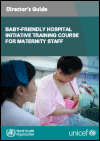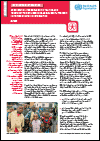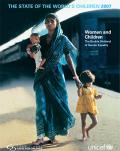Publications on Children

Resource | Publications,
Integrating stakeholder and community engagement in quality of care initiatives for maternal, newborn and child health was developed to guide policy makers and programme implementers on how stakeholder and community engagement can be incorporated into quality improvement initiatives for maternal, newborn and child health. It specifically provides operational guidance through concrete steps and actions on how quality improvement teams at national, district and facility level, can ensure collaborative engagement with relevant stakeholders and communities during in all steps quality improvement implementation.

Resource | Publications,
Violence against children is an epidemic that does not make headlines. 1 billion children experience violence and abuse ever year, with significant health, educational, social and economic consequences. Considerable gains have been made in recent years, but emerging threats—such as online exploitation and abuse of children—continue to grow.

Resource | Publications,
The standards for the care of small and sick newborns in health facilities define, standardize and mainstream inpatient care of small and sick newborns, building on essential newborn care and ensuring consistency with the WHO quality of care framework. The standards will guide countries in caring for this vulnerable population and support the quality of care of newborns in the context of universal health coverage. They will provide a resource for policy-makers, health care professionals, health service planners, programme managers, regulators, professional bodies and technical partners involved in care, to help plan, deliver and ensure the quality of health services.

Resource | Publications,
UNICEF is releasing our Annual Report 2019 against the backdrop of the COVID-19 pandemic.
The pandemic represents a shared global struggle against an invisible enemy. Not only are children and
young people contracting COVID-19, they are also among its most severely impacted victims. Unless we
address the pandemic’s impacts on children, the echoes of COVID-19 will permanently damage our shared future.

Resource | Guidelines,
All health workers who care for women and children during the postnatal period and beyond have a key role to play in establishing and sustaining breastfeeding. Many health workers cannot fulfil this role effectively because they have not been trained to do so. This updated training course is built upon the revised 2018 Ten Steps to Successful Breastfeeding, the latest version of the guidance for implementing the Baby-friendly Hospital Initiative (BFHI) in facilities providing maternity and newborn services. The materials in this training course complement existing courses and can be used as part of the pre-service education of health workers.

Resource | Publications,
The ‘Last Mile’ road map draws on the latest scientific research and programmatic evidence to describe and recommend strategies to achieve the elimination of mother-to-child transmission of HIV (EMTCT). It includes a synthesis of evidence and country experiences for reaching EMTCT and recommends clear strategies that can improve the coverage, effectiveness and quality of national programmes for the prevention of mother-to-child transmission (PMTCT). The goal of this document is to provide guidelines for coordinated action so that national programmes address local priority areas to achieve EMTCT in an effective, people-centred, efficient and directed manner.

Resource | Publications,
This policy brief highlights key elements of the 2020 WHO consolidated HIV strategic information guidelines pertinent to HIV testing and treatment for children. It is designed to support country strategic information teams to choose, collect and systematically analyse the strategic information needed to strengthen programme management and monitoring of testing and treatment for children and adolescents.








